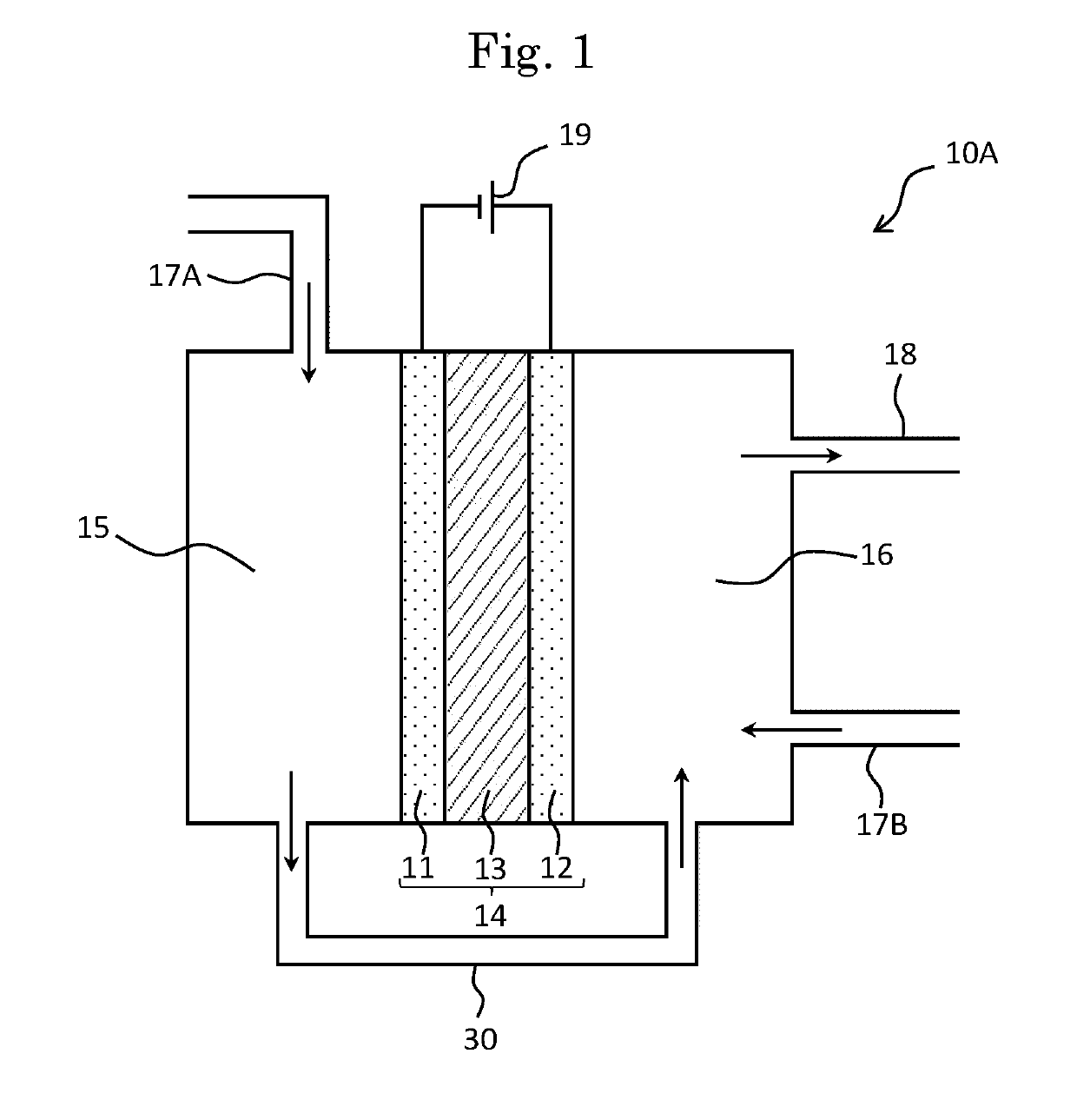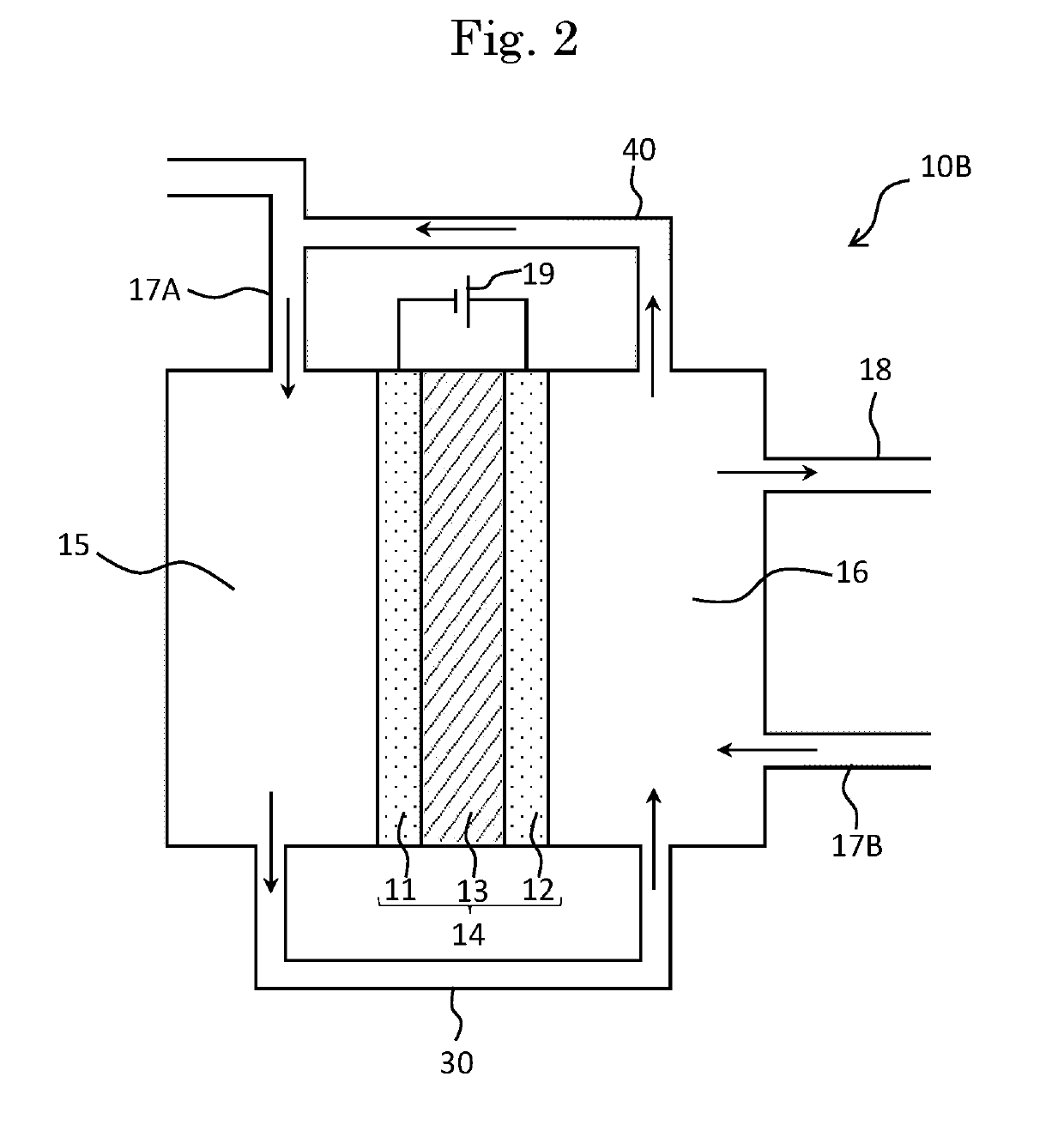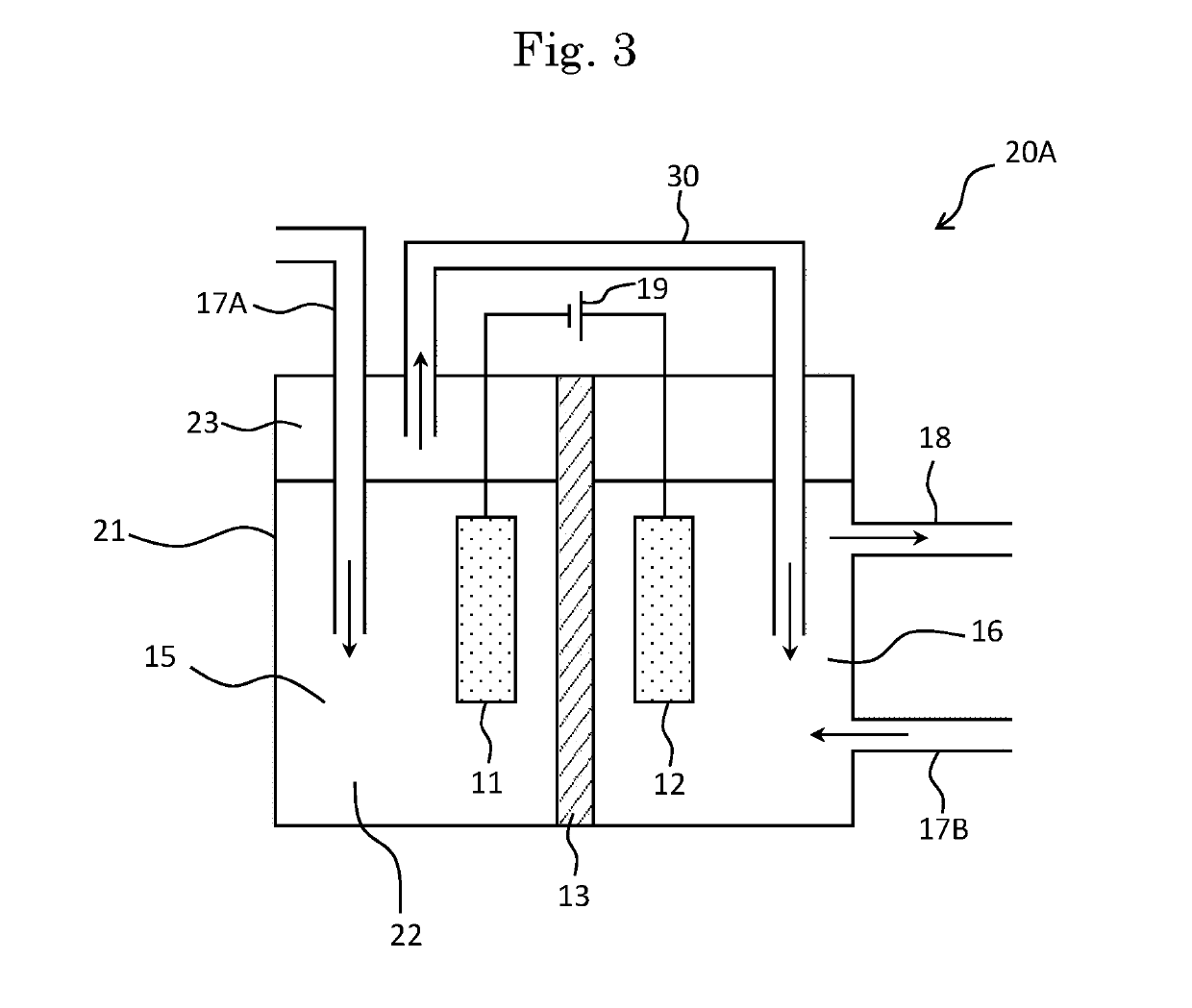Carbon dioxide reduction apparatus and method of producing organic compound
a carbon dioxide reduction and organic compound technology, applied in the direction of electrolysis organic reduction, electrolysis components, cells, etc., can solve the problems of ineffective utilization of electrodes on the other side of the electrode, inability to effectively utilize electrodes, and inability to achieve the effect of effective electrical energy utilization
- Summary
- Abstract
- Description
- Claims
- Application Information
AI Technical Summary
Benefits of technology
Problems solved by technology
Method used
Image
Examples
first embodiment
[0043]FIG. 1 is a schematic view of a carbon dioxide reduction apparatus 10A according to a first embodiment of the present invention. Incidentally, in each drawing, each arrow indicates a movement direction of the raw material and the product in the carbon dioxide reduction apparatus 10A.
[0044]The carbon dioxide reduction apparatus 10A has a first electrode 11, a second electrode 12 and an ion conducting membrane 13 provided inside a cell. The first electrode 11 and the second electrode 12 are arranged on both sides of the ion conducting membrane 13, respectively, and are bonded thereto so as to form a membrane-electrode assembly 14.
[0045]In the carbon dioxide reduction apparatus 10A, the cell is demarcated by the membrane-electrode assembly 14, so that a first electrochemical compartment 15 and a second electrochemical compartment 16 are formed. Thereby, the carbon dioxide reduction apparatus 10A has a two chamber type cell-structure in which the cell is separated into two chamber...
second embodiment
[0111]Next, a carbon dioxide reduction apparatus according to a second embodiment of the present invention will be described. The carbon dioxide reduction apparatus of the second embodiment comprises a second connecting path. FIG. 2 shows a schematic view of a carbon dioxide reduction apparatus 10B according to the second embodiment of the present invention.
[0112]The carbon dioxide reduction apparatus 10B has a similar configuration to that of the carbon dioxide reduction apparatus 10A of the first embodiment, except that the carbon dioxide reduction apparatus 10B further comprises a second connecting path 40 which connects the first electrochemical compartment 15 with the second electrochemical compartment 16. Incidentally, among each configuration which the carbon dioxide reduction apparatus 10B of the present embodiment has, the members denoted by the same reference numerals as those of the carbon dioxide reduction apparatus 10A of the first embodiment have similar configurations...
third embodiment
[0118]Next, a carbon dioxide reduction apparatus according to a third embodiment of the present invention will be described. The third embodiment is a carbon dioxide reduction apparatus in which a first electrochemical compartment 15 is filled with an electrolyte solution. FIG. 3 shows a schematic view of a carbon dioxide reduction apparatus 20A according to the third embodiment of the present invention. Incidentally, among each configuration which the carbon dioxide reduction apparatus 20A of the present embodiment has, the members denoted by the same reference numerals as those of the carbon dioxide reduction apparatus 10A of the first embodiment have similar configurations to those of the carbon dioxide reduction apparatus 10A, unless otherwise described.
[0119]In the carbon dioxide reduction apparatus 20A, the inside of an electrochemical cell 21 is filled with an electrolyte solution 22, and the first electrode 11 and the second electrode 12 are arranged in the inside of the ele...
PUM
| Property | Measurement | Unit |
|---|---|---|
| electrochemical | aaaaa | aaaaa |
| electrical energy | aaaaa | aaaaa |
Abstract
Description
Claims
Application Information
 Login to View More
Login to View More - R&D
- Intellectual Property
- Life Sciences
- Materials
- Tech Scout
- Unparalleled Data Quality
- Higher Quality Content
- 60% Fewer Hallucinations
Browse by: Latest US Patents, China's latest patents, Technical Efficacy Thesaurus, Application Domain, Technology Topic, Popular Technical Reports.
© 2025 PatSnap. All rights reserved.Legal|Privacy policy|Modern Slavery Act Transparency Statement|Sitemap|About US| Contact US: help@patsnap.com



